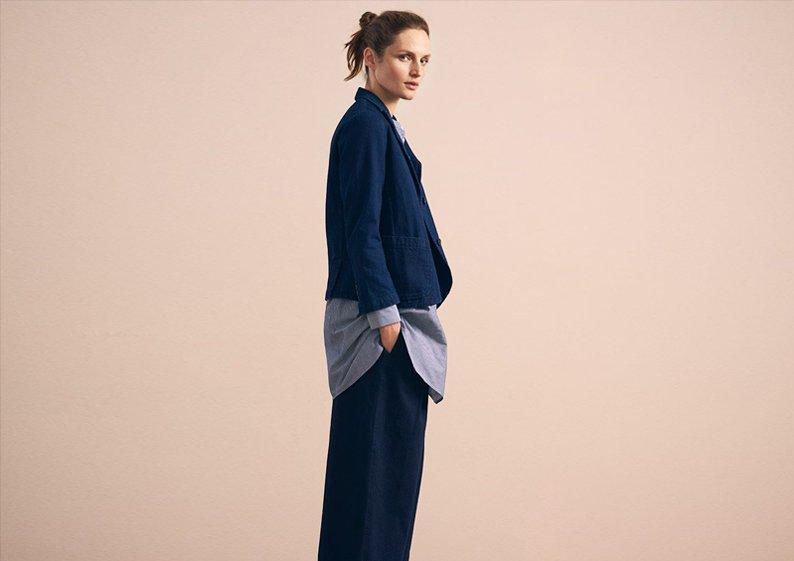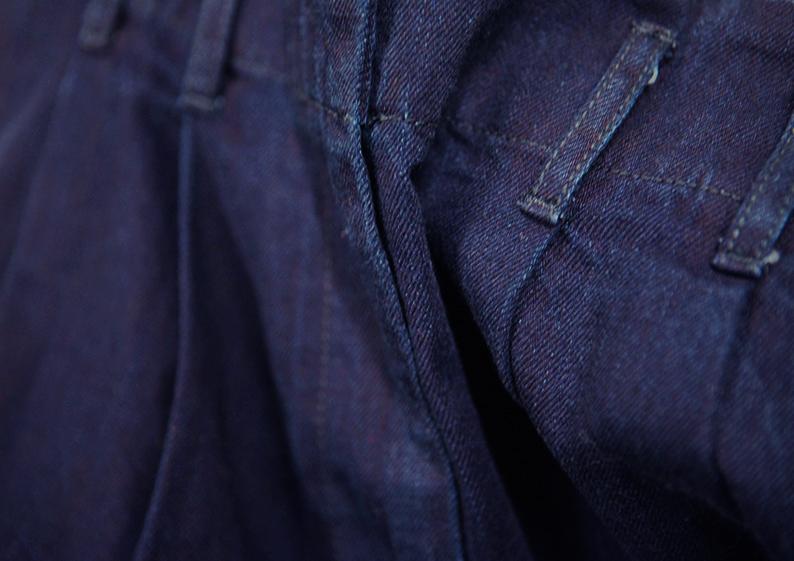
Indigo is a colour bound into Japan's cultural history. The Samurai wore a layer of indigo-dyed cotton beneath their armour, believing it to possess healing properties; the peasants of the Edo period wore only blue, as indigo-dye was thought to make their garments more durable; and the ukiyo-e artists of the 17th century turned to indigo pigment for their depictions of traditional Japanese scenes and landscapes.

Today, veneration of the colour runs deep and the country is still renowned for its ability to produce exquisite indigo textiles. Over the years TOAST has worked with a wonderful mill in Japan to dye and weave several of our indigo cotton twills, double cloths and denims. This mill has taken the time-consuming, manual process of hank dyeing whereby bundles of yarns are dipped, left to dry for 4/5 hours and re-dipped, with the whole process being repeated upwards of 20 to 30 times and remodelled it on a larger scale. By turning the yarns into ropes, and building their own dyeing machine, they have expertly mechanised a traditional process. This way, to achieve the same intensity of blue, the rope only needs to dipped and dried 8 to 10 times.
In comparison to synthetic indigo production this is still an extremely slow process but the mill pursues it for the depth of colour it can achieve, for their desire to uphold and progress traditional techniques and for the possibility of green production the systems they have developed allow them to mitigate any negative effects on the local environment or ecology.
For SS18 we have worked with our Japanese mill to create cropped, wide-leg trousers in a beautiful supple denim and a lovely, neat jacket with asymmetric fastening.
SaveSave
Add a comment